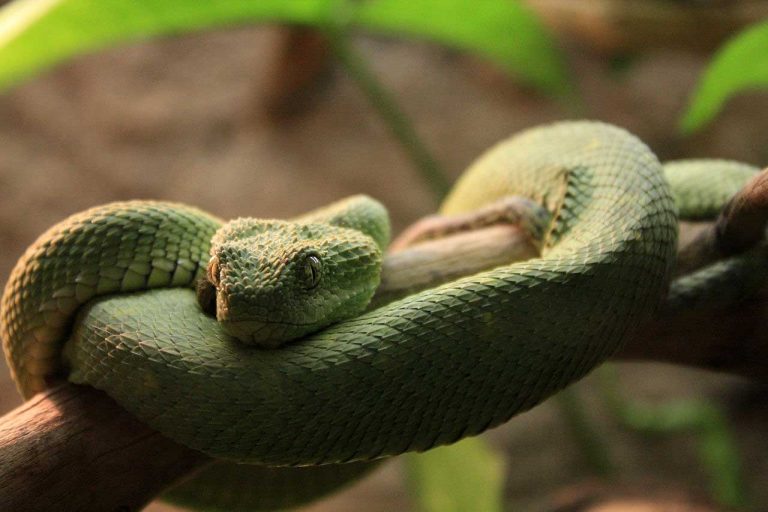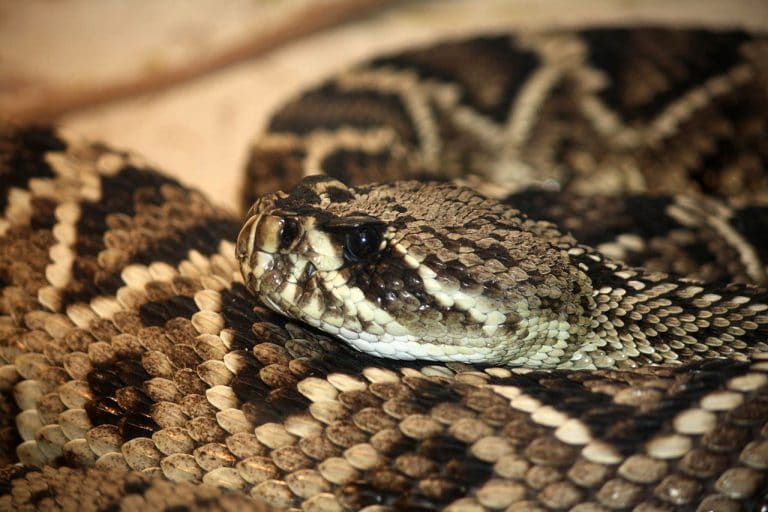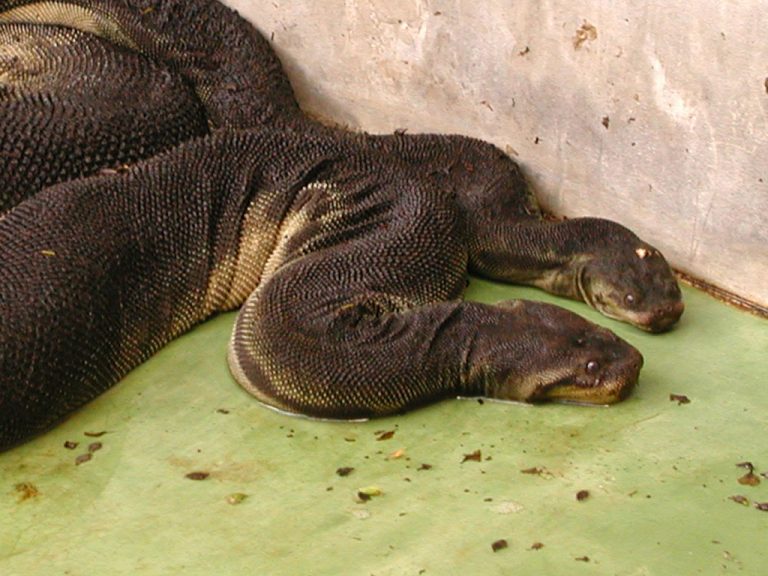5 Fastest Snakes in the World: A Journey Into the Swift Serpent World
Have you ever thought about which snakes have the record for the highest speed? If so, you might find it fascinating to know that a snake’s speed varies widely according to its species, from slow snakes like the Rosy Boa moving at less than 1 mph to the extremely rapid sidewinder moving at up to 18 mph!
Since snakes were the perfect ambush predators, being both quick and harmless, they existed millions of years before mammals and posed a serious threat to them. For this particular reason, snakes have endured in capturing our imaginations and inspiring phobias all over history and across nearly every civilization.
In this article, we will provide you with comprehensive knowledge regarding the fastest snakes in the world. So let’s explore the world of prehistoric predators and learn more about their ability to move quickly.
5 Fastest Snakes In the World
1. The Sidewinder

The sidewinder is a kind of poisonous pit viper that is native to the desert regions of the United States and northern Mexico. The sidewinder, which is considered to be the fastest snake in the world, can move at up to 18 mph (nearly 29 km/h).
As one of the fastest snakes in the world, sidewinders are adapted to survive in their dry habitat. With the help of their scales, they can move in an S-motion through the hot sand without getting burned. As for the visual aspect, those little snakes have tiny horns above each eye, perhaps to prevent sand from blocking the eyes when the snake is underground. Despite having an average body length of a little over 20 inches, adults can grow as long as 30 inches.
2. The King Cobra

The Malay Peninsula, northern India, eastern Indonesia, southern China, and the Philippines are all common spots for spotting king cobras, one of the fastest snakes in the world.
The king cobra is the longest venomous snake, growing up to 14 feet long. In contrast to the title, its scales are olive to gray, while its internal structures appear blue-black. The fact that the king cobra may speed up as far as 15 mph grants it the title of being one of the fastest snakes in wildlife.
The king cobra is thought to be the fastest-killing snake in the world, with a lethality time of about 15 to 30 minutes. King cobras can kill a human in a matter of minutes due to the high concentration of potent neurotoxic venom in their bodies, which stops the body’s nerves from working.
3. The Black Mamba

The black mamba, one of the fastest snakes, may be found from South Africa to South Sudan. Those vicious snakes favor dry, bush-covered locations to reside. The black mamba employs rapid movements to capture prey before injecting a deadly dose of venom. Due to its swiftness, lethal venom, and aggressive nature, the black mamba is regarded as one of the most dreadful snakes in Africa.
The mamba, like other fast snakes, prefers to stay out of people’s way, but if cornered, they’ll fight back and protect themselves. Over open terrain, the fastest black mamba speed is about 12.5 mph Similar to the sidewinder, the black mamba glides in an ‘S’ shape while using lateral undulation to push off obstacles in its path and increase speed.
4. Eastern Brown Snake

Despite appearing harmless, the Eastern brown snake is among the fastest snakes and closely resembles the black mamba, with the only difference being the color of the mouth.
The snake is quite huge, with an adult length of up to 8 feet, and its body is plain brown with no obvious markings or scale separations. The head is oval-shaped and resembles a black mamba’s head. Given their speed, aggression, and versatility, eastern brown snakes are among the most hazardous snakes you can come across in Australia. Over open terrain, one of the fastest snakes in the world, the Eastern Brown Snake, is speeding at about 12.5 mph.
Eastern brown snakes have remarkable survivability as they can move quickly on land, swim even quicker, and are superb climbers. When confronted, they adopt a cobra-like posture, opening their jaws to declare their intentions. They can deliver a lethal combination of hemotoxic and neurotoxic proteins that can quickly cause cardiac arrest and respiratory failure.
5. Southern Black Racer

The southern black racer, also known as Coluber constrictor priapus, is a native of Mexico and the United States. These snakes move extremely quickly to evade predators and other threats, even though they are not poisonous. Since they are meat eaters, they eat lizards, bird eggs, birds, and rodents. Those snakes can lift their heads and long necks several inches off the ground to investigate their surroundings.
This snake frequently travels through suburbs or crosses roadways, but when it is spotted, it tries to flee as fast as possible. Despite their fast movement, these snakes occasionally struggle to evade passing cars and trucks; as a result, cars and trucks frequently run over and kill these snakes.
The racer snake can reach a maximum length of 2 to 5 feet, and thanks to its light body, it can hunt for prey at up to 9.94 mph. This specific snake is therefore deserving of being included on the list of the fastest snakes on Earth.
Can Snakes Outpace Humans?
Typically, snakes move quite slowly since they depend on avoiding detection as well as trying to conserve energy for when they feel threatened or are hunting. Although humans may outpace snakes over greater distances, snakes are typically faster in close quarters.
The fastest snakes listed above are exceptionally swift, so you might question if they could catch up to you or even outpace you. However, there are several factors to take into account, so the answer won’t always be apparent. That’s because if a snake senses your presence as an imminent danger, it will move forward in brief bursts of speed. However, if you maintain a decent pace for a while, you can undoubtedly overtake the snake.
Testing that assumption, though, is nonetheless unwise since if a snake is nearby and you are not conscious of it, it can bite you with a single strike or, with just a little bit of extra speed, it might come up in time to attack you.
How Fast Can Snakes Swim?
Unlike their speed on land, the speed of snakes while swimming varies widely among species and hasn’t been precisely studied. However, not all the fastest snakes are as skilled at swimming. As we are all aware, swimming slows us down, so it is safe to assume that any snake that is willing to swim can likely outrun a person by using quick pulses of acceleration.
One of the fastest snakes in the world, the yellow-bellied sea snake, also known as Hydrophis platurus, has an explosive speed of up to 1 m/sec. It is a fascinating creature that lives its entire life underwater and is unable to move or stand straight on land. The yellow-bellied sea snake has many distinctive characteristics that make it quite easy to survive underwater.
The yellow-bellied sea snakes pause and remain silent while spotting their swimming victim, waiting for the ideal opportunity. They would then charge at the victim with astonishing speed, using the venom to dominate. These snakes tend to target massive groups of fish rather than single fish.
The yellow-bellied sea snake’s paddle-shaped tail is employed to drive the whole body in a circular motion as it is gliding through the water. This makes this species stand out among the rest of the fastest snakes.
How Do You Respond If A Snake Is Approaching You?
Snakes don’t prowl around looking for humans to pounce on, and they typically prefer to be by themselves. However, if a snake suddenly perceives a human as a threat, it may become aggressive and even strike you quickly.
If the snake has observed you, back up slowly and quietly with at least 6 feet between you and the snake without turning around. You can quicken your speed after you’re a safe distance away without frightening the snake.
Naturally, this does not mean that you cannot be bitten, particularly if you reside in a region where there are many snakes. A snake that decides to attack rather than get away, may be too frightened and confused to make the best decision for its survival.
Final Thoughts
The realm of snakes is filled with a wide range of outstanding speedsters, from the deadly Sidewinder snakes, which move at lightning speed, to the harmless Southern Black Racer snakes. In addition to the uniqueness associated with speed, each of the fastest snakes that we described has additional distinctive qualities, knowledge of which makes the process of exploring nature much safer.
Finding out which snake species are among the fastest in the world is satisfying knowledge to comprehend the threat these creatures can represent, whether you love reptiles or are just curious about them.

Nato is a content writer and researcher with a background in psychology who’s eager to explore the wonders of nature. As a travel enthusiast and animal lover, she hopes to inspire others to discover and cherish the beauty and importance of the natural world.







